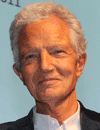Co-Located Conference AgendasLab-on-a-Chip World Congress | Microarray World Congress | Point-of-Care Diagnostics World Congress 2013 | Single Cell Analysis Summit | 

Thursday, 12 September 201308:00 | Registration | |
Advances in DNA Arrays |
| | 09:00 |  | Keynote Presentation Microarrays in Diagnostics: An Update
Bertrand Jordan, Director, Marseille-Nice Genopole, France
Microarrays continue to penetrate clinical diagnostics, where they have a number of advantages. Additional applications of microarrays include the assessment of proteins, antigens and enzymatic activities, ensuring their continuing presence in clinical diagnostics. |
| 10:00 | Coffee Break and Networking in the Exhibition Hall | 10:45 | Study of Gene Expression Signatures of Pulmonary Disease
Yuriy Alekseyev, Research Assistant Professor, Boston University School of Medicine, United States of America
We applied microarray and RNA sequencing technologies to study the effects of smoking, lung cancer and COPD on gene expression in lung tissue and bronchial and nasal epithelial cells. The observed changes in mRNA and microRNA expression provide insights into the molecular pathogenesis of the disease and may help to derive useful biomarkers for diagnosis and/or predicting prognosis and response to therapy. | 11:30 | CANCELLED - DUE TO VISA ISSUES
Jiong Li, Professor, CAS Suzhou Institute of Nano Technology and Nano-Bionics, China
| 12:15 | Lunch and Networking in Exhibition Hall | 13:30 | Poster Viewing Session | |
Emerging Technologies |
| | 14:15 | Skinomics: Skin as the Target for DNA Microarrays
Miroslav Blumenberg, Associate Professor, NYU Langone Medical Center, United States of America
Due to accessibility skin and dermatology were among the earliest fields using microarray studies. Noninvasive skin sampling targeted melanoma, carcinoma, wound-healing, etc. Most advanced skinomics studies addressed psoriasis. A large international GWAS effort identified many of the psoriasis susceptibility loci in the human genome. Several large cohorts of more than 100 individuals provided samples of psoriatic lesional and nonlesional skin making possible deep metaanalysis of gene expression in psoriasis. Recently, human skin microbiome in health and diseases has become the focus of extensive studies. These advancements place skinomics at the forefront of medical bioinformatics. | 15:00 | Copy Number and SNP Microarrays: Applications in a Clinical Setting
Alka Chaubey, Director, Cytogenetics Laboratory, Greenwood Genetic Center, United States of America
Copy number and SNP microarrays are being routinely used in diagnostic laboratories for the evaluation of individuals with intellectual disability and neurodevelopmental disorders. Current guidelines by American College of Medical Genetics ensure that the cryptic syndromic genomic alterations are detected by this technology. However, the clinical specificity and sensitivity of different platforms varies greatly. The applications of oligonucleotide and/or SNP arrays and the diagnostic utility of this technology in a clinical setting will be presented. | 15:45 | Coffee Break and Networking in the Exhibition Hall | 16:30 | Using the Random Generalized Linear Model to Predict Clinical Outcomes Based on Genomic Data
Steve Horvath, Professor, University of California Los Angeles, United States of America
The random generalized linear model (RGLM) predictor is a bootstrap aggregated GLM predictor that incorporates several elements of randomness and instability (random subspace method, optional interaction terms, forward variable selection). RGLM is a state of the art predictor that shares the advantages of a random forest (excellent predictive accuracy, feature importance measures) with those of a forward selected generalized linear model (interpretability). | 17:15 | Validating Multi-gene Prognostic Assays in Breast Cancer on the NanoString N-Counter Platform
Lance Miller, Associate Professor, Wake Forest School Of Medicine, United Kingdom
For diagnostic applications, multiplex RNA assays must demonstrate robust performance in technically challenging specimens such as formalin-fixed paraffin-embedded (FFPE) tissues. This talk will address the reliability and reproducibility of the NanoString nCounter platform toward development of clinically-actionable gene expression signatures in breast cancer. | 18:00 | Reception and Roundtable Discussions in Exhibition Hall | 19:30 | End of Day One |
Friday, 13 September 2013 |
Advances in Protein and Antibody Arrays |
| | 09:00 |  | Keynote Presentation Turning Affinity Proteomics into a Discovery Tool - Next Generation Antibody Arrays
Carl Borrebaeck, Professor and Deputy Vice Chancellor, Lund University, Sweden
We have expanded the concept of antibody microarrays and developed the next generation arrays where the discovery of previously unknown biomarkers can be achieved by the utilization of so called motif-specific binders. |
| 10:00 | Coffee Break and Networking in the Exhibition Hall | 10:45 | A Protein Array Platform with A New Approach to Labeling and Detection
Michael Shultz, Director of Research, Grace Bio-Labs, United States of America
Porous nitrocellulose is well established as the substrate of choice for Reverse Phase Protein Arrays (tissue lysates), largely due to its high protein-binding capacity. Using a cytokine capture assay as a model, we demonstrate protein array performance in terms of dynamic range and limit of detection that meets or exceeds that reported for ELISA assays. For sensitive detection of proteins on porous nitrocellulose we developed complementary reagents and a fast and powerful microarray imager utilizing a low-noise, high-speed imaging camera. | |
Drug Discovery and Development |
| | 11:30 | The Impact of Glycan Arrays on Biology and Medicine
Ten Feizi, Professor/Director, Imperial College London, United Kingdom
Glycans attached to proteins and lipids are prominently displayed on cells, extracellular matrices and secretions; they are intricately involved in biological process in health, and directly or indirectly in every major disease, infectious or non-infectious. The advent of glycan arrays has revolutionized the unravelling of the carbohydrate-protein interactions that mediate these processes. I will discuss contributions from the microarray system based on the neoglycolipid technology. | 12:15 | Lunch and Networking in Exhibition Hall | 13:30 | Poster Viewing Session | 14:15 | Using Reverse Phase Protein Arrays to Understand the Basis for Sensitivity and Resistance to BRAF Inhibitors in Metastatic Melanoma
Nathan Moerke, Senior Assay Developer, Harvard Medical School, United States of America
We are using reverse phase protein arrays, in combination with high content microscopy, to characterize the response of genetically characterized melanoma cell lines to BRAF inhibitor treatment in order to identify signalling pathways mediating sensitivity and resistance to these drugs. | 15:00 | Using Microarray and Proteomics to Understand the Role of Nutrient Metabolism in Inducing Transporters During Ontogenetic Development of the Gut
Rolando Ferraris, Professor, UMDNJ, United States of America
For most animal cells, the signals that regulate differentiation and expression levels typically arise from endogenous autocrine, paracrine, neurocrine or endocrine sources. Unlike most cells, however, intestinal epithelial cells are directly exposed to luminal contents known to act as environmental cues regulating development of numerous transport and enzyme systems required for nutrient absorption. An important, unexplored question that is key to increasing our understanding of gut ontogenetic development is whether metabolism of these luminal contents is required for the regulation of gut enzymes and transporters. | 15:45 | Coffee Break and Networking in the Exhibition Hall | 16:15 | Drug-Eluting Microarrays for Screening Combinatorial Drug Interactions in Primary Cancer Stem Cells
Matthew Carstens, Graduate Research Assistant, University of Florida, United States of America
Here we present the development of a novel drug-eluting cellular microarray for investigation of cancer stem cell biology. | 17:00 | Close of Conference |
|


 Add to Calendar ▼2013-09-12 00:00:002013-09-13 00:00:00Europe/LondonMicroarray World CongressMicroarray World Congress in San Diego, CA, USASan Diego, CA, USASELECTBIOenquiries@selectbiosciences.com
Add to Calendar ▼2013-09-12 00:00:002013-09-13 00:00:00Europe/LondonMicroarray World CongressMicroarray World Congress in San Diego, CA, USASan Diego, CA, USASELECTBIOenquiries@selectbiosciences.com